|
copyright 2005
[an error occurred while processing this directive]
| |
Tidbits
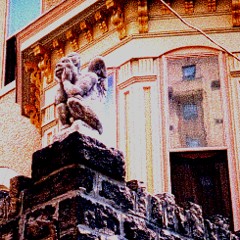 |
| This gargoyle sits on the corner of a garage in a
non-descript neighborhood. |
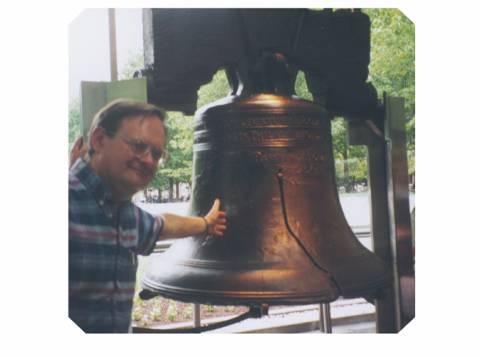 |
| That's not the crack. It's a repair. The actual crack
that took the bell out of commission after 93 years of use is around the
back. It goes all the way to the top. If a bell cracks anywhere but at the
top, standard repair calls for drilling out the crack to keep the edges
from vibrating against each other. The story the ranger told about this
bell is that when it arrived from England, it didn't sound good (possibly
a crack in transit.) Rather than send it back, a couple of
local pot makers (Pass and Stowe) melted it down, added some pots, pans,
and candlesticks, and recast it. It still didn't sound good.
So, they melted it again, added even more pots, pans, and
candlesticks. When they were done, it sounded good, but looked
amateurish. Never mind -- it was going to be in a tower where nobody
would look at it. They never made another bell. The fatal crack
occurred while celebrating Washington's birthday. Yes, you can touch
it. |
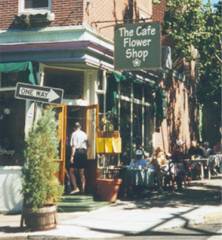 |
| Sidewalk cafes are common even in neighborhoods. This one
is also a flower shop. |
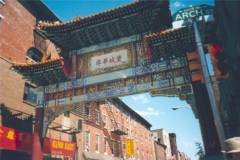 |
| The Chinatown Arch is at Arch and 10th Streets. |
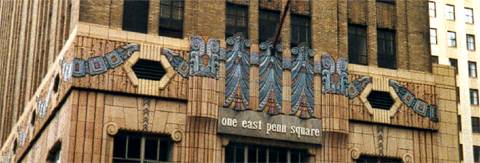 |
| Detail of One East Penn Square. |
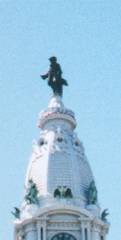 |
| Billy Penn would be furious if he knew about this statue of
him. The story goes that he was a Quaker. His dad had loaned
King Charles II large sums of money. KCII wanted to pay that
debt. KCII wanted to be rid of Billy Penn and all his trouble making
Quaker buddies. Billy Penn wanted land in America, far away from
KCII. So, BP offered KCII a deal. BP would take his Quaker
trouble-makers to America and call the debt paid. KCII agreed on one
condition -- that the land be named after BP's wealthy father.
According to Quaker strictures, nothing can ever be named after a
person. You can only name things after plants and rocks. But
eventually BP gave in. When he first designed Philadelphia, he set
Philly up on a grid system alternating parks and housing areas. Some
of the streets still bear the original names: Walnut, Chestnut, Pine,
Locust, Spruce. But the parks are now named after people. And
to add insult to injury, Until the mid 70's this statue of Billy Penn was
the highest thing in the city. You can take an elevator ride up to
the top of City Hall, directly under this statue. On a clear day
you can see all the way down the Franklin Parkway to the
Philadelphia Art Museum. |
|





